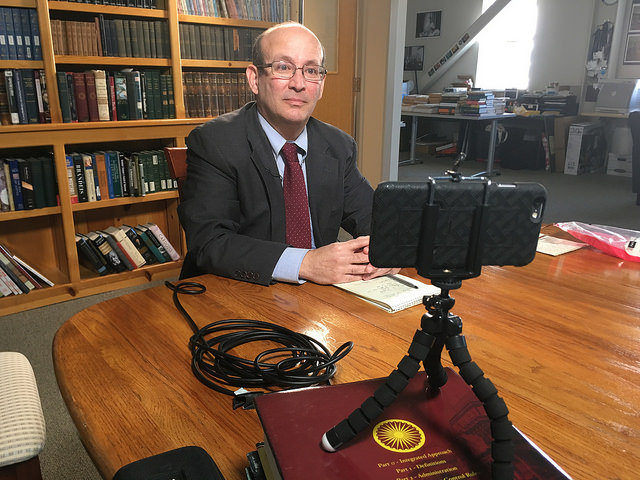
CC-BY Public.Resource.Org on Flickr
Adding synchronous activities to your asynchronous online class can help to foster social presence and instructor immediacy. Using such tools as Google Hangouts, Skype, Zoom, etc. can add an element of interactivity and engagement to the online course that might otherwise be missing. Web-conferencing can be used to prepare students for upcoming assignments, review recent material, offer virtual office hours, and more…
but what about accessibility?
Our campus recently adopted a policy that essentially requires all online instruction meet accessibility guidelines. While our facilities department is well versed in ensuring campus physical learning spaces meet ADA requirements, faculty may struggle with how to approach accessibility within the virtual learning environment. When the disabilities office notifies an instructor that a student in their class needs further accommodation they also provide the direction and support necessary to meet the student’s needs.
Universal design vs. Accommodation
To accommodate a specific student with a disability is to retrofit instruction to meet that student’s needs. However, by applying Universal Design principles we anticipate a wide range of learners’ needs and design the instruction and learning environment accordingly.
Universal design for learning is achieved by means of flexible curricular materials and activities that provide alternatives for students with differing abilities.
Employing universal design principles in instruction does not eliminate the need for specific accommodations for students with disabilities. There will always be the need for some specific accommodations, such as sign language interpreters for students who are deaf. However, applying universal design concepts in course planning will assure full access to the content for most students and minimize the need for specific accommodations. – DOIT Center
So how can we go about ensuring online synchronous activities are accessible to all students regardless of ability? Part of the answer may depend on how the synchronous tools are being used.
Several web-conferencing solutions permit attendees to participate by dialing in on their phones rather than using computer VoIP. A phone connection may be used with other devices and services – such as Telecommunications Relay Services (TRS) – to translate voice to text. Also by dialing in for the web-conference rather than using the browser or app, students can avoid exceeding their data cap when they are not connected via WiFi.
When presenting to the entire class in real-time, provide links to accessible digital materials in advance for participants to review and follow along during the session. Provide detailed descriptions and annotations to go along with any images, charts and graphs used within the presentation. Take the time to describe the significance of each graphic in detail during the presentation. These practices will also help when transcribing or captioning the session for recordings after the event.
By using the chat feature provided in most web-conferencing solutions all participants can submit questions. Assign a moderator to keep track of the chat window and type in the presenter’s answers to posted questions. Whether a question is being asked by someone in the lecture hall or via chat, it is always a good idea to repeat the question before responding.
Rather than using only video and voice features, offer chat and/or text messaging as options for conferences with individual students. Be sure the information on how and when to connect is also made accessible. Web links should provide a description and any further instructions in plain text (as opposed to images, arrows, highlighted text, etc.) to be read by screen-reader software. Include a phone number in the invite as well in the event description for hearing impaired students to access via TRS services.
By taking the time to create accessible web-conferences we not only accommodate the student with a visual or hearing impairment, we make the presentation more usable for all participants.
References:
DOIT Center: Universal design vs. accommodation
Federal Communications Commission: Telecommunications Relay Service (TRS)
W3C: Understanding WCAG 2.0 – Time-based Media
IBM Human Ability & Accessibility Center: Overcoming accessibility challenges of web-conferencing